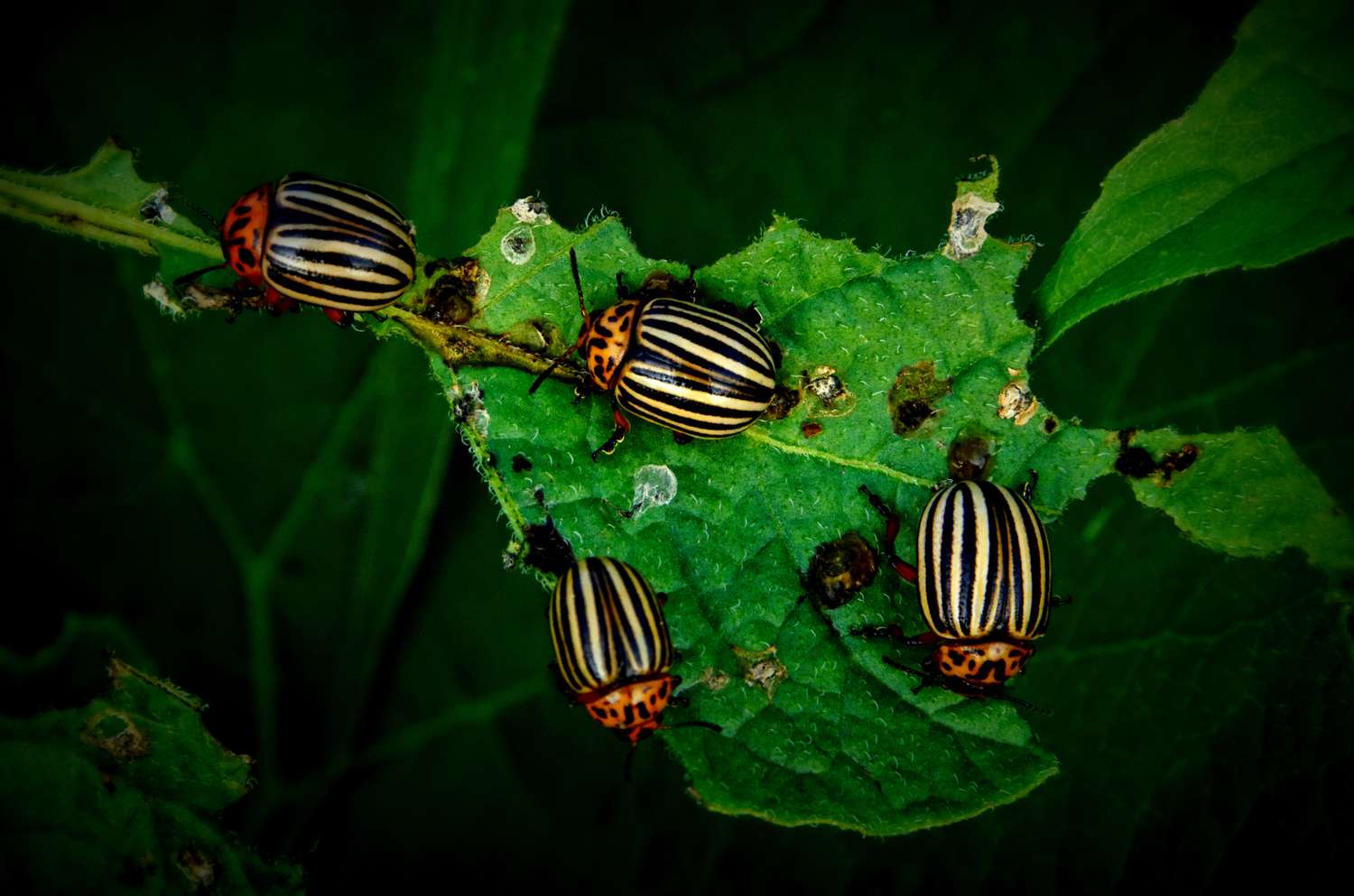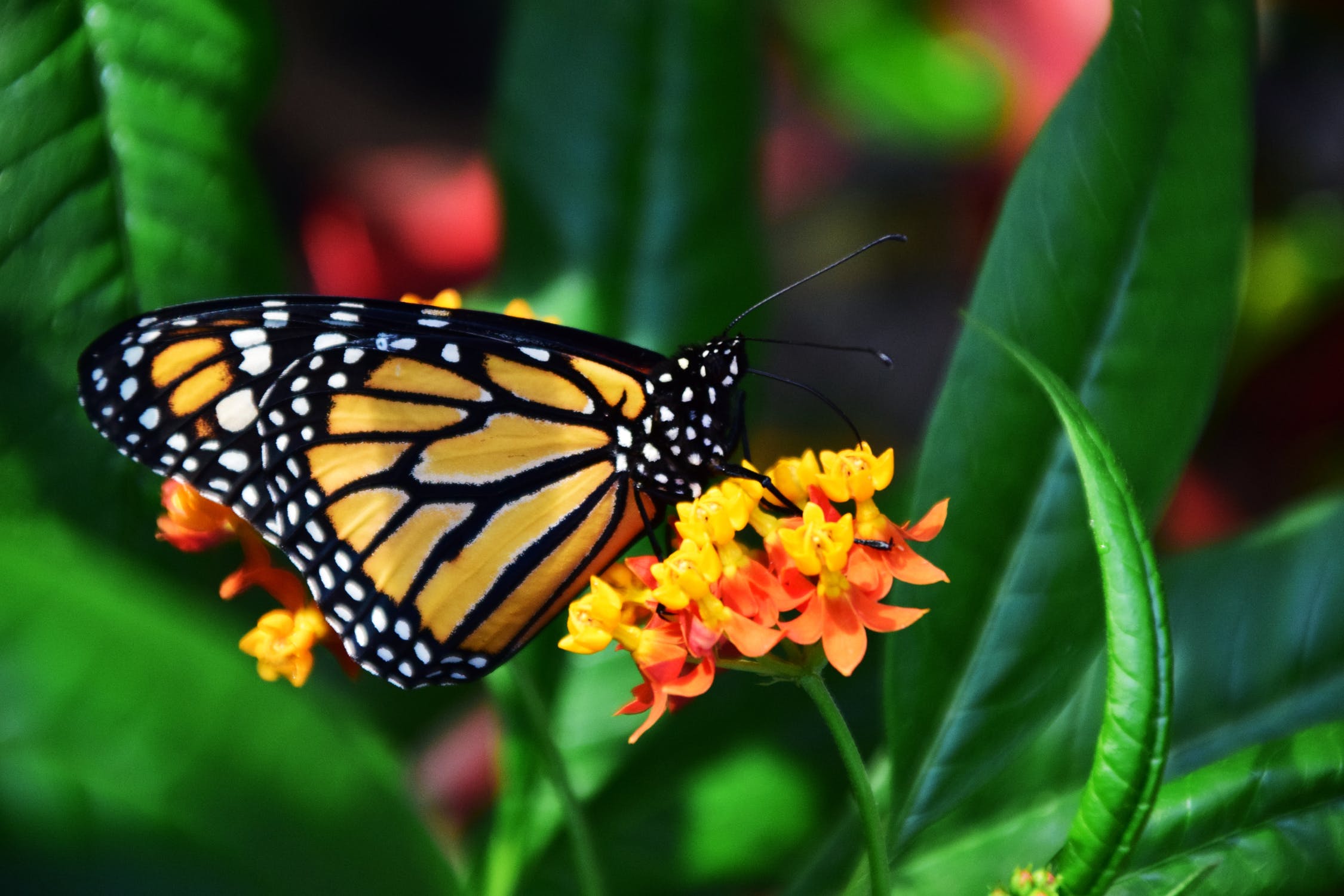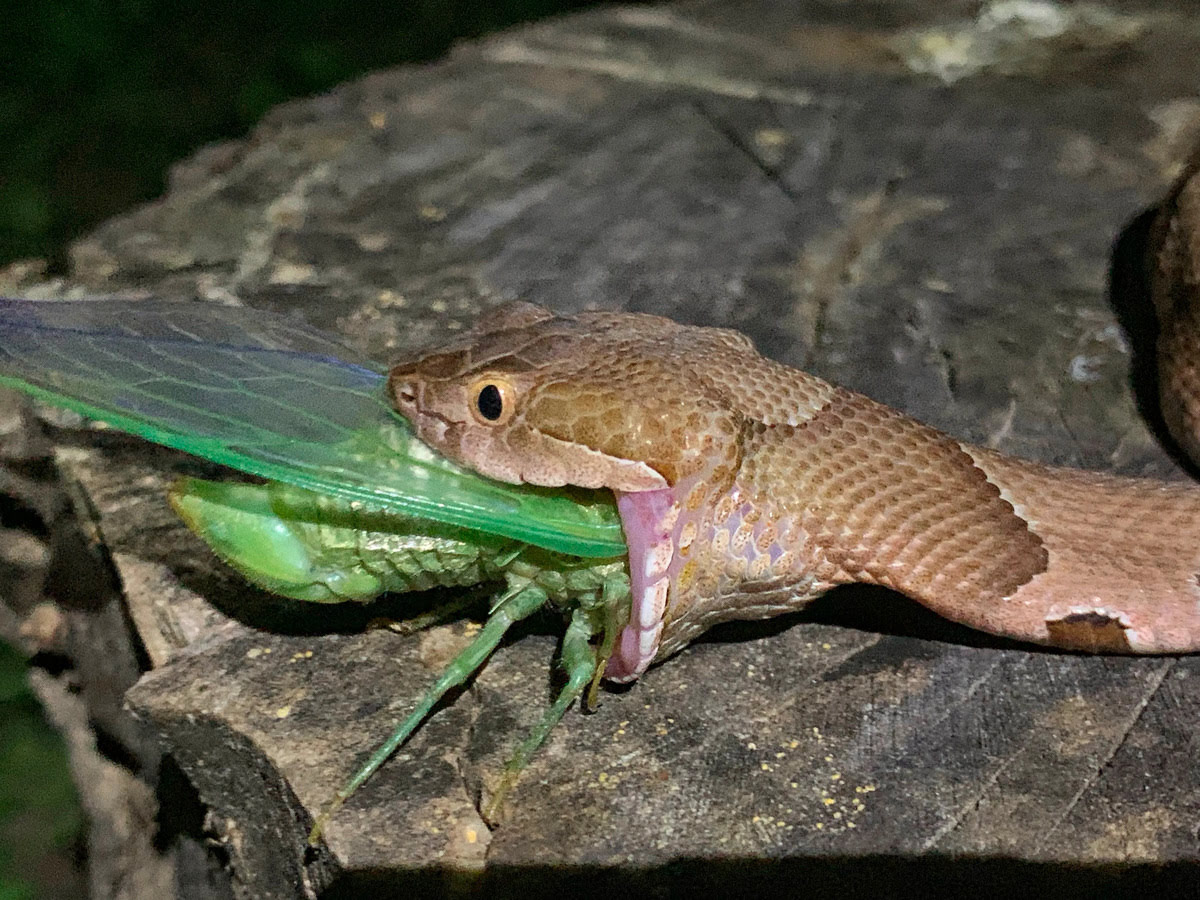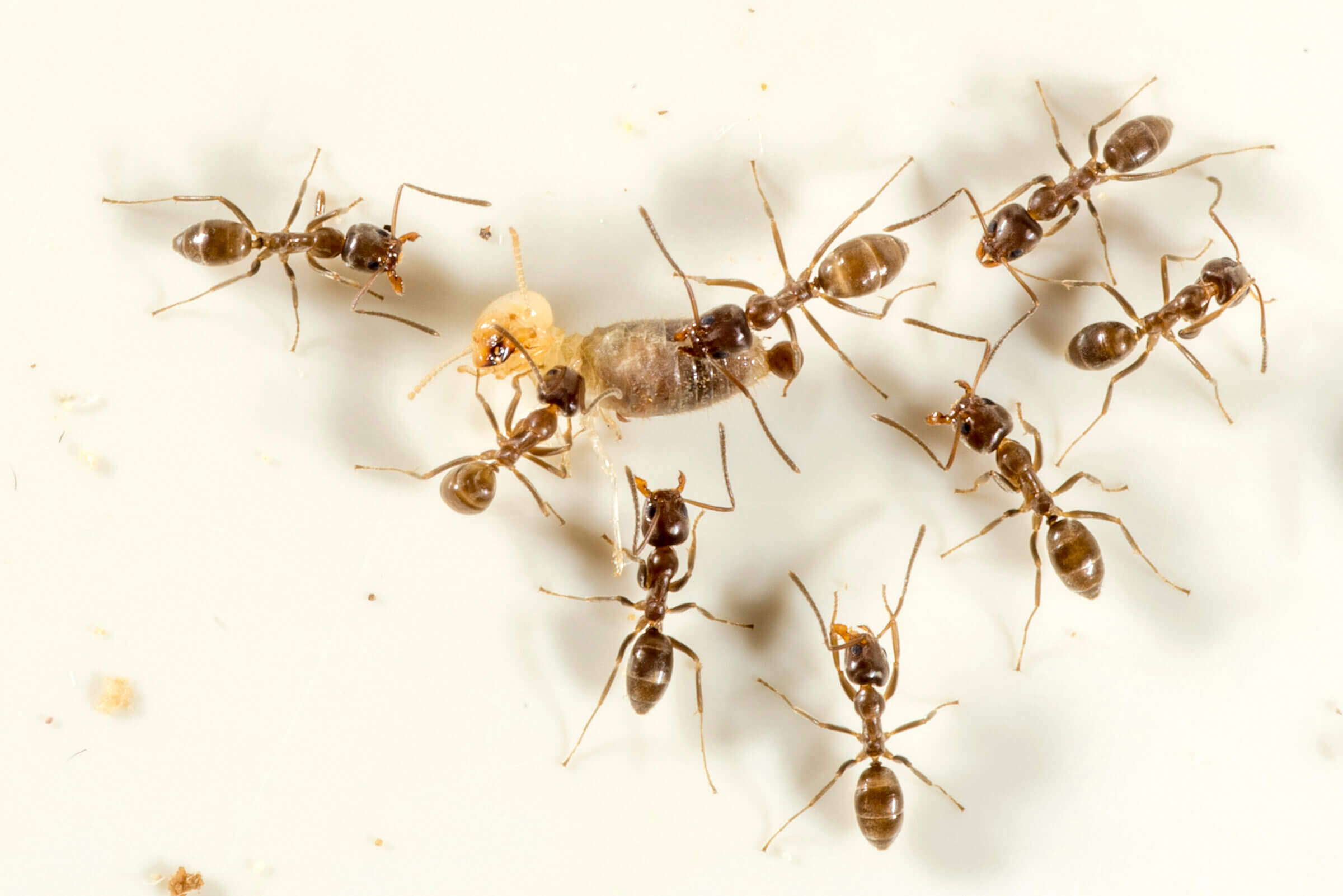Home>Gardening News and Trends>Latest News>How Is Eating Insects Good For The Environment
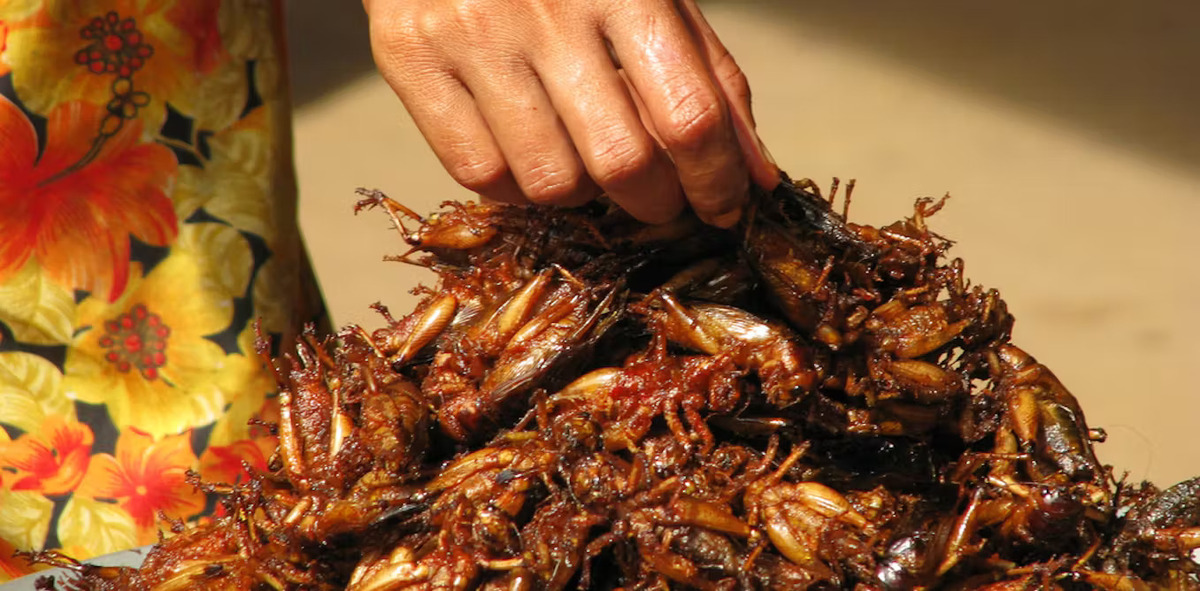

Latest News
How Is Eating Insects Good For The Environment
Modified: January 22, 2024
Discover the latest news on the benefits of eating insects for the environment. Find out how this sustainable practice can help reduce greenhouse gas emissions and promote food security.
(Many of the links in this article redirect to a specific reviewed product. Your purchase of these products through affiliate links helps to generate commission for Chicagolandgardening.com, at no extra cost. Learn more)
Table of Contents
- Introduction
- Benefits of Eating Insects for the Environment
- Reduced Greenhouse Gas Emissions
- Lower Land and Water Requirements
- Decreased Deforestation
- Efficient Resource Conversion
- Potential Solution to Food Shortages
- Challenges and Criticisms
- Cultural Resistance and Perception
- Regulations and Safety Concerns
- Allergies and Dietary Restrictions
- Conclusion
Introduction
As the global population continues to increase, finding sustainable and environmentally-friendly food sources becomes imperative. One solution that is gaining traction is the consumption of insects. While it may sound unappetizing to some, eating insects has been part of human diets in many cultures for centuries. In fact, over 2 billion people worldwide already include insects in their regular meals.
What makes eating insects particularly appealing is the positive impact it can have on the environment. As the demand for traditional livestock farming grows, so does its negative impact on land use, greenhouse gas emissions, and water consumption. On the other hand, insects offer a promising alternative as they are highly sustainable, require fewer resources to cultivate, and produce minimal waste.
This article will delve into the various benefits of eating insects for the environment, as well as address some of the challenges and criticisms surrounding this emerging trend. By exploring the potential advantages and disadvantages, we can gain a better understanding of whether or not incorporating insects into our diets is a viable solution for a more sustainable future.
Benefits of Eating Insects for the Environment
When it comes to the environmental impact of our food choices, eating insects offers several advantages over traditional livestock farming. Let’s explore some of the key benefits:
- Reduced Greenhouse Gas Emissions: Unlike conventional livestock, insects produce significantly lower levels of greenhouse gases such as methane. Research has shown that insect farming emits up to 90% less greenhouse gases compared to cattle farming. This reduction in emissions helps mitigate climate change and its detrimental effects.
- Lower Land and Water Requirements: Rearing insects is incredibly efficient in terms of land and water usage. For instance, crickets require six times less feed than cattle to produce the same amount of protein. Additionally, insects need far less water compared to traditional livestock, making them a more sustainable choice for water-scarce regions.
- Decreased Deforestation: The demand for land to raise livestock contributes to deforestation, which leads to the loss of valuable ecosystems and habitat destruction. Insects can be farmed in vertical systems or indoor facilities, significantly reducing the need for large expanses of land. By choosing insects as a food source, we can help preserve forests and protect biodiversity.
- Efficient Resource Conversion: Insects are incredibly efficient at converting feed into protein. For example, crickets convert feed into edible protein at a rate of 2:1, whereas cattle have a conversion rate of around 8:1. This efficiency makes insect farming more sustainable, as it requires fewer resources to produce the same amount of protein compared to traditional livestock.
- Potential Solution to Food Shortages: With the global population projected to reach 9 billion by 2050, finding sustainable food sources is crucial. Insects offer a solution to this challenge as they reproduce rapidly and have a high feed conversion efficiency. Incorporating insects into our diets can help alleviate food shortages and provide a reliable source of nutrition for future generations.
The benefits of eating insects for the environment are clear. By embracing insects as a food source, we can reduce greenhouse gas emissions, conserve land and water, combat deforestation, optimize resource utilization, and potentially address future food security issues. However, it is important to acknowledge that challenges and criticisms exist, which we will explore in the next section.
Reduced Greenhouse Gas Emissions
One of the most significant benefits of eating insects is their low greenhouse gas emissions compared to traditional livestock. Livestock farming, particularly cattle, is a major contributor to greenhouse gas emissions, mainly in the form of methane. Insects, on the other hand, produce minimal amounts of methane, making them a more environmentally-friendly alternative.
The digestion process of insects is different from that of mammals. Insects have a simple digestive system that allows for more efficient nutrient extraction. As a result, they produce significantly less methane during the digestion process compared to ruminant animals like cows and sheep.
Research has shown that insect farming can reduce greenhouse gas emissions by up to 90% compared to traditional livestock farming methods. The lower emissions can be attributed to several factors. Firstly, insects have a higher feed conversion efficiency, meaning they require less feed to produce the same amount of protein compared to cattle. This leads to a reduced amount of methane-producing waste produced.
Secondly, insects have a shorter lifespan compared to mammals, which means they emit fewer gases over their lifetime. Insects also have a higher reproductive rate, allowing for more rapid production and turnover, further reducing their impact on greenhouse gas emissions.
Furthermore, insect farming systems can be designed to capture and utilize methane produced during the decomposition of organic waste. Methane can be converted into biogas, which can be used as a renewable energy source, further reducing the environmental footprint associated with insect farming.
By choosing to incorporate insects into our diets, we can significantly reduce greenhouse gas emissions. This not only helps combat climate change but also minimizes the environmental impact associated with traditional livestock farming.
Lower Land and Water Requirements
Eating insects offers a substantial advantage in terms of land and water usage compared to traditional livestock farming. Raising livestock, especially cattle, requires vast amounts of land and water resources. In contrast, insect farming is considerably more efficient, requiring significantly less land and water.
When it comes to land requirements, the difference is striking. Insects can be farmed vertically or in compact indoor facilities, allowing for higher production rates in smaller areas. In contrast, cattle farming necessitates large expanses of land for grazing or growing feed crops.
For instance, it takes approximately six times less feed to produce the same amount of protein from crickets compared to cattle. This means that insect farming can achieve higher productivity and protein yield per unit of land, making it a more sustainable option in terms of land utilization.
Water usage is another crucial consideration. Livestock farming is notorious for its substantial water requirements, including for drinking, feeding crops, and cleaning. Insects, however, have a much lower water footprint. They require significantly less water for their survival and growth, making them more suitable for water-scarce regions.
According to research, just one kilogram of beef requires about 15,000 liters of water, while the same amount of crickets needs only around one liter of water. This stark difference highlights the efficient water use of insects and their potential to alleviate the strain on water resources.
By choosing to incorporate insects into our diets, we can reduce the demand for extensive land use and alleviate pressure on water resources. This shift can contribute to the conservation of natural habitats, mitigate the effects of deforestation, and promote more sustainable land and water management practices.
Decreased Deforestation
The demand for land to raise livestock has devastating consequences for forests and natural ecosystems, leading to widespread deforestation. One of the significant benefits of eating insects is the potential to decrease deforestation rates and preserve valuable forested areas.
Livestock farming requires vast amounts of land for grazing as well as to cultivate feed crops such as soybeans and corn. This expansion of agricultural land often involves clearing forests, which not only leads to habitat loss but also contributes to climate change through the release of stored carbon dioxide.
Insects, however, provide a more sustainable alternative as they can be reared in vertical farming systems or compact indoor facilities. These controlled environments require significantly less land compared to traditional livestock farming. Insect farms can be constructed vertically, utilizing space efficiently and reducing the need for expansive pasturelands.
Moreover, the shorter lifecycle and higher reproduction rate of insects enable a more rapid turnover in production. Compared to cattle, insects require less time to reach maturity and are capable of producing a larger number of offspring in a shorter period. This accelerated production allows for higher yield in a smaller area, reducing the overall land requirements.
By choosing insects as a food source, we can help mitigate deforestation by minimizing the need for new land conversion. This can protect sensitive ecosystems, preserve biodiversity, and maintain vital carbon sinks that play a crucial role in regulating the Earth’s climate.
It is important to note that while insect farming offers the potential to decrease deforestation, it is crucial to adopt sustainable and responsible practices in the industry. This includes sourcing feed from sustainable and traceable sources, minimizing the use of pesticides, and ensuring the ethical treatment of insects throughout the farming process.
Efficient Resource Conversion
Insects are incredibly efficient at converting resources into usable protein, making them an environmentally-friendly option for food production. When compared to traditional livestock, insects have a much higher feed conversion efficiency and require fewer resources to produce the same amount of protein.
For example, crickets have a feed conversion ratio of about 2:1, meaning it takes only 2 kilograms of feed to produce 1 kilogram of cricket protein. In contrast, cattle have a feed conversion ratio of around 8:1, requiring 8 kilograms of feed to produce the same amount of beef. This efficiency can be attributed to the fact that insects utilize a wider range of feed sources, including organic waste, agricultural byproducts, and even certain plants that are not suitable for human consumption.
Insects also have a higher reproductive rate and shorter lifespans compared to traditional livestock. This means they can be produced and harvested more rapidly, allowing for a quicker turnover and higher overall production. This efficiency is particularly valuable in a world where food demands are growing rapidly and resources are becoming scarce.
Additionally, insect farming produces minimal waste. Unlike traditional livestock farming, where large amounts of manure and byproducts can pose environmental challenges, insects generate very little waste. Their waste, known as frass, can even be repurposed as a nutrient-rich fertilizer for crops, closing the loop and creating a more sustainable agricultural system.
By utilizing insects as a resource-efficient protein source, we can minimize the environmental impact of our food production systems. Insects require fewer resources to thrive, reduce waste, and can contribute to a more sustainable and circular economy.
However, it is crucial to ensure that insect farms are properly managed and follow sustainable farming practices. This includes sourcing feed from responsible and traceable sources, implementing appropriate waste management systems, and ensuring the overall welfare of the insects during their life cycle.
Potential Solution to Food Shortages
With the global population projected to reach 9 billion by 2050, there is growing concern about the ability to sustainably feed everyone. Insects offer a potential solution to address future food shortages and provide a reliable source of nutrition for an increasingly populated world.
One of the key advantages of insects is their ability to reproduce rapidly and generate high yields in a short period. Many insects have short life cycles and can produce a significant number of offspring within a short span of time. This accelerated production allows for a more efficient and continuous supply of food.
Furthermore, insects require fewer resources to produce the same amount of protein compared to traditional livestock. As mentioned earlier, insects have a higher feed conversion efficiency and can convert feed into edible protein more efficiently than cattle or poultry. This means that a smaller amount of resources, such as land, water, and feed, is required to produce a comparable amount of protein from insects.
Insect farming also has the potential to be more sustainable in terms of land use. As insect farms can be established in smaller areas, they offer flexibility in terms of location and can be set up even in urban environments. This decentralized approach to food production can help reduce the strain on agricultural land and enable food production to be closer to urban centers, reducing transportation distances and associated carbon emissions.
Additionally, insects have a high nutritional value, rich in protein, healthy fats, vitamins, and minerals. They can be a valuable source of essential nutrients, especially in regions where access to traditional protein sources is limited or expensive. By incorporating insects into diets, particularly in regions grappling with food insecurity, we can improve access to nutritious food and support overall human well-being.
While there are cultural and perceptual barriers to overcome in incorporating insects into mainstream diets, numerous initiatives and awareness campaigns are promoting the benefits and exploring innovative ways to incorporate insects into familiar food products. With continued research, development, and social acceptance, insects have the potential to play a crucial role in addressing future food shortages and ensuring food security for a growing global population.
Challenges and Criticisms
While there are clear environmental benefits to eating insects, there are also challenges and criticisms that need to be considered. These include cultural resistance, regulatory concerns, and potential health risks.
Cultural Resistance and Perception: In many Western cultures, insects are not part of the traditional diet, and there may be a cultural resistance to accepting them as a viable food source. Overcoming the stigma and changing societal perceptions about eating insects will be crucial for wider adoption. Education and raising awareness about the nutritional and environmental benefits of insects can help in overcoming these barriers.
Regulations and Safety Concerns: The laws and regulations surrounding the production and sale of insects for human consumption vary across countries. The lack of standardized regulations can create obstacles in scaling up insect farming and ensuring food safety. It is essential to establish clear guidelines, certification systems, and quality standards to ensure the safety and integrity of insect-based food products.
Allergies and Dietary Restrictions: As with any food, allergies and dietary restrictions can be a concern when it comes to eating insects. Some individuals may have allergic reactions to specific insect proteins, and it is important to consider these potential risks. Further research and testing are needed to understand the allergenicity of different insect species and develop appropriate labeling and information for consumers.
Environmental Impact of Large-Scale Farming: While small-scale insect farming has minimal environmental impact, the potential environmental impact of large-scale industrial insect farms needs to be carefully considered. Factors such as sourcing feed sustainably, managing waste, and minimizing potential negative impacts on local ecosystems require thorough assessment and planning.
Impact on Wild Insect Populations: There is a concern that mass-scale insect farming could have unintended consequences for wild insect populations and ecosystems. Importation and release of non-native insect species for farming purposes could disrupt local ecosystems and pose risks to native species. Careful monitoring and regulation are essential to prevent negative ecological impacts.
While there are challenges and criticisms to address, ongoing research and development in the field of insect farming can help overcome these obstacles. By addressing concerns related to culture, safety, and environmental impact, there is potential to fully harness the benefits of eating insects and create a more sustainable and resilient food system.
Cultural Resistance and Perception
One of the primary challenges in promoting the widespread consumption of insects is cultural resistance and perception. In many Western cultures, insects are not traditionally considered part of the regular diet, leading to a certain level of aversion and skepticism towards incorporating them as a food source.
Food habits and preferences are deeply ingrained in cultural traditions, and deviating from these norms can be met with resistance. Many people have a deeply-rooted bias against insects due to a perceived “ick factor” or disgust associated with insects as a food source.
Overcoming cultural resistance requires educating people about the nutritional and environmental benefits of insects. Increasing awareness about the protein content, their low environmental footprint, and the potential to address food shortages can help shift perceptions. Highlighting the historical and cultural significance of insects as a food source in other regions can also play a role in normalizing their consumption.
It is important to highlight that insects have been consumed by various cultures for centuries and continue to be enjoyed by billions of people worldwide. By showcasing the diversity of insect-based dishes and their culinary versatility, individuals may become more open to trying and accepting insects in their diets.
Creating a positive image around eating insects is crucial in overcoming the cultural resistance. This can be achieved through innovative culinary approaches, such as incorporating insects into familiar dishes or presenting them in visually appealing ways. Chef collaborations, food festivals, and media campaigns can help generate interest and curiosity, encouraging individuals to expand their culinary horizons.
Educational initiatives at schools, universities, and community centers can also play a significant role in destigmatizing insects as a food source. By introducing children and young adults to insects as a viable protein option, we can shape their perceptions and mindset from an early age, fostering a more accepting and open attitude towards diverse food sources.
Changing cultural attitudes and perceptions takes time, but with continued efforts, we can bridge the gap and create a cultural shift towards embracing insects as a sustainable and nutritious food source. By celebrating the diversity of global culinary traditions and promoting the benefits of insect consumption, we can overcome cultural resistance and pave the way for a more sustainable future of food.
Regulations and Safety Concerns
Another challenge when it comes to eating insects is the complex landscape of regulations and safety concerns surrounding their production and consumption. With the growing interest in insect farming, it is essential to establish clear guidelines, standards, and quality controls to ensure the safety and integrity of insect-based food products.
One of the major regulatory challenges is the lack of standardized regulations governing the production and sale of insects for human consumption. Different countries have different legal frameworks and requirements, which can create barriers to scaling up insect farming and establishing a cohesive market. Streamlining regulations and creating harmonized standards can help provide a framework for industry growth and consumer confidence.
Food safety is a significant concern when it comes to insects as a food source. Ensuring that insect-based products meet rigorous safety standards is essential to protect public health. This includes pesticide use, microbial contamination, and proper handling and processing practices throughout the supply chain. Implementing good agricultural and manufacturing practices specific to insect farming can help mitigate potential risks.
Another safety consideration is the allergic potential of insects. While rare, some individuals may have allergies to specific insect proteins, similar to other known food allergies. Understanding the allergenicity of different insect species, labeling requirements, and providing clear information to consumers about potential allergens is crucial to ensure consumer safety and transparent product labeling.
Regulations and safety concerns also extend to sourcing the feed for insects. The quality and origin of the feed can have implications for the safety and sustainability of insect farming. Ensuring the use of sustainable and traceable feed sources is essential to avoid potential contamination and to minimize the environmental impact associated with feed production.
Addressing these regulatory and safety concerns requires collaboration between governments, scientific experts, and industry stakeholders. Establishing streamlined regulations, conducting research on allergenicity and safety, and promoting transparency and traceability in the supply chain are key steps in ensuring the safe and responsible development of the insect farming industry.
Consumer education is also important to address safety concerns and build trust. Providing information about the safety measures that are in place, the nutritional benefits of insects, and the rigorous quality controls can help alleviate consumer apprehension and promote acceptance of insect-based products.
Through comprehensive regulations, industry collaboration, and proactive education, we can ensure that the production and consumption of insects as a food source comply with safety standards, protect public health, and enable the growth of a sustainable and responsible insect farming industry.
Allergies and Dietary Restrictions
When considering the incorporation of insects into our diets, one of the significant concerns is the potential for allergies and dietary restrictions. As with any food, there is a possibility of allergic reactions and compatibility issues with certain dietary requirements.
While insect allergies are relatively rare, individuals with existing allergies to crustaceans, dust mites, or shellfish may be at higher risk of experiencing an allergic reaction to insects. Some proteins present in insects are similar to those found in these allergenic sources. Therefore, individuals with known allergies or sensitivities should exercise caution and consult with healthcare professionals before consuming insect-based products.
It is essential to conduct comprehensive research and testing to identify potential allergenic components of specific insect species and assess cross-reactivity with common allergens. This information can help inform labeling and provide guidance for individuals with known allergies or dietary restrictions.
Additionally, individuals who follow dietary restrictions or specific diets, such as vegetarian, vegan, or halal, may have concerns about consuming insects. The acceptability of insects within these dietary frameworks may vary depending on personal beliefs and interpretations.
For vegetarians and vegans, the ethical concerns around the treatment of insects and the ethical implications of harvesting them may be a consideration. While insects are considered animals, some argue that their nervous systems are less developed, and their cognitive capacities are different from mammals, providing an ethical distinction. The decision to include insects in a vegetarian or vegan diet ultimately depends on individual perspectives on animal rights and the concept of harm.
In the case of halal dietary restrictions, the permissibility of consuming insects may vary among different interpretations and depending on the specific insect species. It is important for individuals following these dietary guidelines to consult with religious authorities or certifying organizations to ensure compliance with their beliefs and guidelines.
Transparency and accurate labeling are crucial in addressing allergies and dietary restrictions. Clear and informative labeling should indicate the presence of insect ingredients or potential cross-contamination risks, allowing individuals to make informed choices.
Further research and collaboration between medical and scientific communities are necessary to better understand allergenicity, explore substitutions for individuals with dietary restrictions, and provide comprehensive guidelines for individuals with allergies or specific dietary requirements.
By addressing allergies and dietary restrictions and providing accurate information to consumers, we can ensure the safe and inclusive incorporation of insects into our diets while respecting individual needs and choices.
Conclusion
Exploring the benefits and challenges of eating insects reveals their potential as a sustainable and environmentally-friendly food source. Insects offer numerous advantages for the environment, including reduced greenhouse gas emissions, lower land and water requirements, decreased deforestation, efficient resource conversion, and the potential to address future food shortages.
However, there are cultural resistance, regulatory concerns, and potential health risks that need to be addressed. Overcoming cultural taboos and perception barriers is essential for wider acceptance and adoption of insects as a food source. Harmonizing regulations, establishing safety standards, and promoting transparency in the industry can ensure the responsible development of insect farming.
Furthermore, addressing allergies and compatibility with dietary restrictions is crucial to ensuring inclusivity and safety. Research on allergenicity and cross-reactivity can inform labeling and guidance for individuals with known allergies or sensitivities. It is also important to consider the acceptability of insects within vegetarian, vegan, and halal dietary frameworks.
In conclusion, incorporating insects into our diets has the potential to contribute to a more sustainable and resilient food system. It requires a collaborative effort from governments, industry stakeholders, and consumers. By embracing the nutritional and environmental benefits of insects, addressing challenges, and promoting awareness, we can tap into the potential of these small creatures to nourish our growing population while minimizing the impact on the planet.


